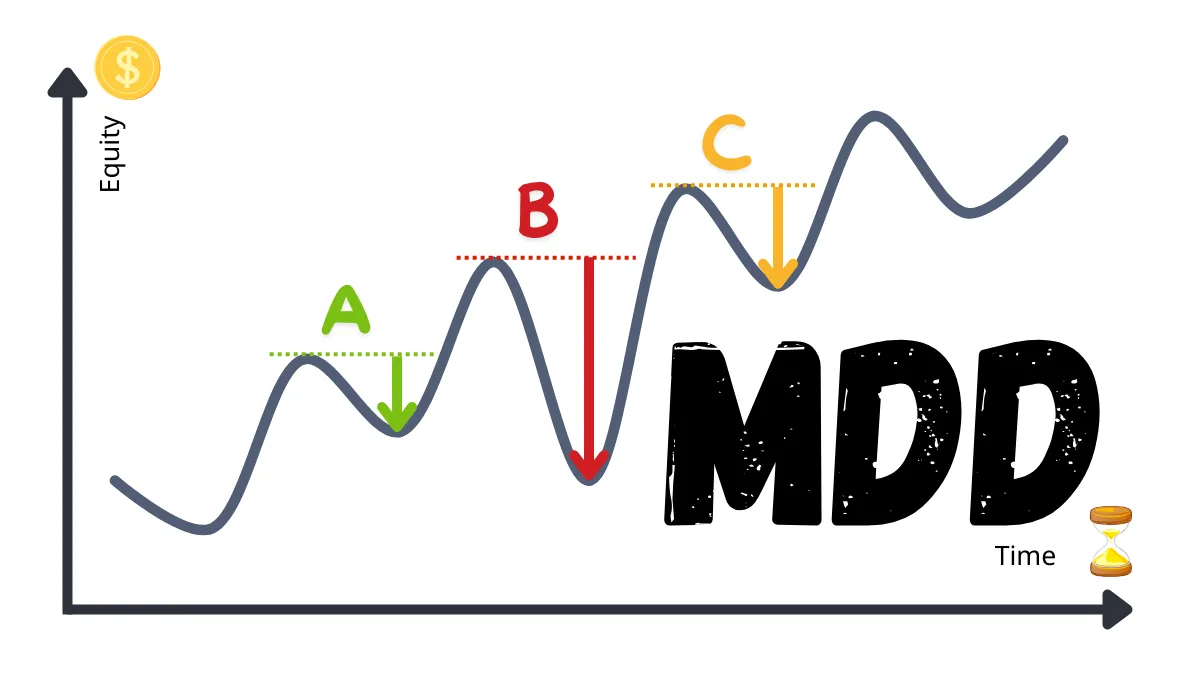C-Book: How Forex Brokers Manage Risk
The C-Book model is a rare but noteworthy risk management strategy for forex brokers. It represents an advanced risk management approach where brokers conduct more refined risk management operations internally, aggregating client orders and hedging risks. Although the C-Book model is not as widely used as the A-Book and B-Book, it is an effective risk management and profit model in certain situations. This article will explore how the C-Book model operates and introduce how forex brokers manage risk and maintain profitability through this model.1. Definition of the C-Book Model
The C-Book model is not as frequently mentioned as the A-Book or B-Book models; it represents a further extension of a hybrid model. In simple terms, the C-Book refers to brokers internalizing client orders, but unlike the B-Book, the C-Book focuses more on order aggregation and risk hedging. Brokers do not merely internalize orders; instead, they intelligently manage different orders based on market conditions and risk exposure.- Internal Processing: Brokers aggregate some orders internally, which are not immediately passed to the external market but matched and managed internally for risk.
- Hedging Risk: When brokers cannot fully internalize orders, they hedge the remaining risk exposure, usually in the external market or through the use of derivatives.
2. How the C-Book Model Operates
The operation of C-Book brokers lies between A-Book and B-Book. Similar to the B-Book, brokers internalize orders, but unlike the B-Book, the C-Book model emphasizes order aggregation and risk hedging. This means that brokers conduct more refined risk management internally, choosing to hedge certain orders based on market conditions rather than relying entirely on client losses for profit.A. Order Aggregation
The key to the C-Book model is order aggregation. Brokers gather orders from different clients together, which effectively eliminates certain hedging risks. For example, if one client buys EUR/USD and another client sells the same currency pair, brokers can internally match these two orders, thus avoiding passing the orders to the external market.- Internal Matching: By aggregating orders from multiple clients, brokers can effectively reduce external risk exposure while increasing internal liquidity.
- Risk Neutrality: When brokers can fully match orders, these orders do not generate additional market risk, allowing brokers to remain profitable without taking on risk.
B. Intelligent Hedging
Another difference between the C-Book model and the B-Book is that when internal matching of orders is not possible or when risk exposure is too large, brokers choose to hedge the remaining risk. This intelligent hedging strategy allows brokers to flexibly decide whether to hedge in the external market based on market conditions.- Partial Hedging: Brokers do not fully hedge all orders but choose hedging strategies based on market risk, order size, and client trading behavior. For example, if a client holds a large unilateral position and market risk rises, brokers may choose to hedge this portion of risk in the external market.
- Hedging Tools: Brokers may use derivatives (such as options or futures) to hedge their risk exposure, allowing for more flexible management of long-term or short-term risks.
3. Risk Management Strategies of the C-Book Model
The core goal of C-Book brokers is to minimize risk through order aggregation and hedging while maintaining profitability. Here are common risk management strategies used by C-Book brokers:A. Client Behavior Analysis
Similar to hybrid models, C-Book brokers closely track client trading behavior, particularly identifying which clients are more likely to be profitable and which clients are more prone to losses. Such analysis helps brokers flexibly decide which orders can be internalized and which need to be hedged.- Hedging High-Risk Clients: For clients with stable profits or frequent trading, brokers choose to hedge their orders to avoid taking on excessive market risk.
- Internalizing Loss-Making Clients: For clients who frequently incur losses or have unstable trading, brokers choose to internalize their orders to profit from client losses.
B. Market Condition Assessment
The C-Book model emphasizes adjusting hedging strategies based on market conditions. When market volatility is high or liquidity is insufficient, brokers choose to externally hedge certain orders to avoid significant impacts on their funds from market price fluctuations.- Hedging During High Volatility: When the market is in a high volatility state (e.g., during major economic data releases or central bank policy changes), brokers may hedge more orders to reduce market risk exposure.
- Internalizing During Low Volatility: When the market is relatively stable, brokers may internalize more orders to reduce external trading costs and increase profitability.
C. Technical Support and Risk Monitoring
C-Book brokers rely on advanced technology and data analysis systems to automate risk management. These systems can monitor market conditions, client behavior, and internal risk exposure in real-time, automatically triggering hedging operations when necessary.- Setting Risk Limits: Brokers typically set maximum risk limits for each currency pair or client group, and when internal risk exceeds these limits, the system automatically performs external hedging operations.
- Automated Hedging Systems: These systems can automatically hedge based on market changes within milliseconds, ensuring brokers can quickly respond to market fluctuations.
4. Profit Model of the C-Book Model
The C-Book model achieves profitability through internalizing orders and hedging. Brokers can generate income in the following ways:- Widening the Spread: Brokers can control the spread between the buy and sell prices through internalizing orders, profiting from it.
- Reducing External Costs: By internally matching orders, brokers can avoid passing all orders to the external market, saving on trading fees and spreads from external liquidity providers.
- Client Loss Revenue: For internalized loss-making client orders, brokers can directly profit from these losses.
5. Challenges of the C-Book Model
Despite the flexibility and profit potential of the C-Book model, it also faces some challenges and risks:- Market Risk: When brokers cannot effectively hedge risk exposure, severe fluctuations in market prices may lead to significant losses.
- Conflict of Interest: Similar to the B-Book model, C-Book brokers become counterparties to clients when internalizing orders, which may lead to conflicts of interest and affect client trust.
- Transparency Issues: If brokers fail to clearly explain their order execution strategies to clients, it may lead to insufficient transparency, affecting the broker's reputation.
Conclusion
The C-Book model is a flexible and advanced risk management strategy for forex brokers, managing risk and enhancing profitability through internalizing orders and hedging. Brokers can dynamically adjust their risk exposure based on market conditions and client behavior, minimizing the impact of market volatility on their funds. Although the C-Book model offers greater flexibility and profit potential, it also faces challenges such as market risk and conflicts of interest, requiring brokers to effectively respond through advanced technology and risk management strategies.Hi, We are the Mr.Forex Research Team
Trading requires not just the right mindset, but also useful tools and insights.Here, we focus on Global Broker Reviews, Trading System Setup (MT4 / MT5, EA, VPS), and Forex Trading Basics.
We personally teach you to master the "Operating Manual" of financial markets, building a professional trading environment from scratch.
If you want to move from theory to practice:
- Help share this article to let more traders see the truth.
- Read more articles on Broker Tests and Forex Education.





